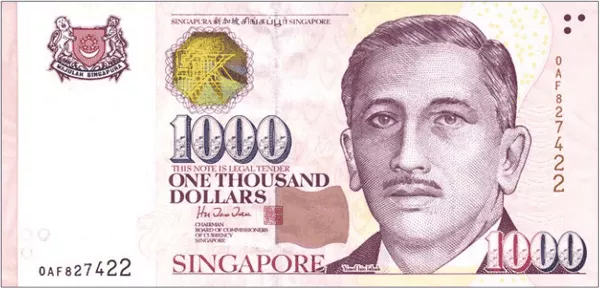Currency exchange rates play a crucial role in international trade and travel. For individuals or businesses involved in financial transactions between Singapore and India, it is essential to understand the conversion rate between the currencies of the two countries. In this article, we will delve into the Singapore currency and its value in Indian Rupees (INR), exploring factors influencing exchange rates and methods to stay updated on conversions.
1. The Singapore Dollar (SGD):
The official currency of Singapore is the Singapore Dollar (SGD). Since 1967, the Monetary Authority of Singapore has been responsible for issuing and managing the SGD. The currency is symbolized by the “$” sign and divided into 100 cents.
2. Determinants of Exchange Rates:
Exchange rates are influenced by various factors, and understanding them can provide insights into currency fluctuations. Key determinants include:
Interest Rates: Divergence in interest rates between Singapore and India affects their respective currencies. Higher interest rates attract foreign investments, strengthening the currency.
Economic Factors: Economic indicators such as GDP growth, inflation rates, employment levels, and trade balances impact exchange rates. A strong economy generally leads to an appreciating currency.
Political Stability: Political stability fosters investor confidence, attracting more foreign capital. This, in turn, strengthens the currency.
Market Sentiment: Perceptions, market speculation, and geopolitical events can cause short-term fluctuations in exchange rates.
3. Exchange Rate Calculation:
The exchange rate between the Singapore Dollar and Indian Rupee fluctuates daily, and it is important to stay informed about the prevailing rate. Exchange rates are typically displayed as “SGD/INR,” indicating the amount of Indian Rupees required to purchase one Singapore Dollar.
4. Tools to Determine Exchange Rates:
Several reliable sources provide real-time exchange rate information. These include financial institutions, online currency converters, and smartphone applications. Some popular platforms include XE.com, OANDA, and Bloomberg.
5. Factors Affecting Singapore Dollar to Indian Rupee Conversion:
The conversion of SGD to INR is influenced by several factors:
Demand and Supply: If demand for Singapore Dollars increases relative to the Indian Rupee, its value appreciates, and vice versa.
Trade Relations: Bilateral trade between Singapore and India affects currency values. Stronger trade ties can positively impact exchange rates.
Government Policies: Monetary and fiscal policies implemented by the respective governments can affect currency values.
Market Speculation: Investor sentiment and market speculation can lead to short-term fluctuations in the exchange rate.
6. Historical Trends:
Over the years, the SGD to INR exchange rate has witnessed fluctuations due to various economic factors. While it is subject to change, historical trends can provide insights into potential future movements. Monitoring past exchange rate performance can help individuals and businesses make informed decisions.
Conclusion:
Understanding the conversion rate between the Singapore Dollar and Indian Rupee is crucial for anyone engaged in financial transactions between Singapore and India. It is influenced by a variety of factors, including interest rates, economic indicators, political stability, and market sentiment. Staying updated on real-time exchange rates through reliable sources is essential for accurate conversions. By monitoring historical trends and considering the factors mentioned, individuals and businesses can navigate currency exchange with confidence and make informed decisions accordingly.


